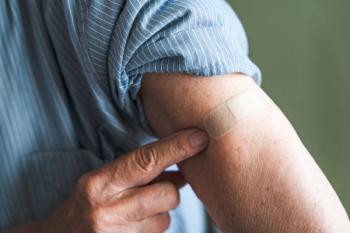
RSV Vaccine Coverage Similar to Flu Could Reduce Illness, Cost Burden
A model showed that if a vaccine coverage of 66% were achieved—similar to flu vaccination coverage—it could have a budget impact of $6.48 to $6.78 billion over the first RSV season.
Vaccination against respiratory syncytial virus (RSV) among older adults at the population level could significantly reduce the burden of illness and be cost-effective, according to new research published in the journal Clinical Infectious Diseases.1
According to the CDC, RSV causes substantial morbidity and mortality among older adults. The disease results in 60000 to 160000 hospitalizations and 6000 to 10000 deaths annually among adults ages 65 years or older in the United States.2 The FDA recently approved 2 RSV vaccines, GSK’s Arexvy and Pfizer’s Abrysvo, for adults ages 60 and older to prevent RSV-associated lower respiratory tract disease.
“RSV causes substantial morbidity and mortality among the elderly in the US and globally, but this is the first time that RSV vaccines have been available,” Alison Galvani, lead author on the study, said in a release.3 “We wanted to understand the potential impact of RSV vaccination in terms of averting illness, medical costs, hospitalizations, and deaths.”
Investigators from Yale University conducted a study to evaluate the health benefits and cost-effectiveness of the 2 approved RSV vaccines. Data for the study was gathered from a discrete-event simulation model created by researchers that looked at the costs associated with RSV-related outcomes, such as outpatient care, hospitalization, and death.
Net monetary benefit was calculated by using quality-adjusted life years (QALY) gained as a measure of vaccine effectiveness. Range of price-per-dose (PPD) was determined for vaccination programs of the 2 RSV vaccines to find what would be cost-effective from a societal perspective.
Investigators found that vaccination programs could be cost-effective for a PPD up to $127 with Arexvy and $118 with Abrysvo over the first RSV season with a willingness-to-pay of $95000 per QALY gained. The model showed that if a vaccine coverage of 66% were achieved—similar to flu vaccination coverage—the programs could have a budget impact of $6.48 to $6.78 billion.
Additionally, if the vaccination programs extended to a second RSV season with an estimated PPD of $235 for Arexvy and $245 for Abrysvo, the budget impact could increase to $11.78 and $12.25 billion, respectively.
Study limitations include that the analysis did not consider the complexity of RSV transmission dynamics, that potential short-term costs and loss of productivity associated with treatment of severe adverse reactions were not considered, and that the estimates of PPD were not stratified by age.
“Accessibility and cost are definitely concerns in the American health care system,” Galvani said. “We hope that our results will inform decision-makers about the health and economic benefits of vaccination, as our results demonstrate the importance of making these vaccines accessible to everyone over 60 years to realize their full benefit.”
References
1. Moghadas SM, Shoukat A, Bawden CE, et al. Cost-effectiveness of Prefusion F Protein-based Vaccines Against Respiratory Syncytial Virus Disease for Older Adults in the United States. Clin. Infect. Dis. 2023, ciad658. https://doi.org/10.1093/cid/ciad658
2. Havers FP, Whitaker M, Melgar M, et al. Characteristics and Outcomes Among Adults Aged ≥60 Years Hospitalized with Laboratory-Confirmed Respiratory Syncytial Virus — RSV-NET, 12 States, July 2022–June 2023. MMWR Morb Mortal Wkly Rep 2023;72:1075–1082. DOI: http://dx.doi.org/10.15585/mmwr.mm7240a1
3. Scully JM. RSV Vaccines Would Greatly Reduce Illness if Implemented Like Flu Shots. News Release. Yale University. January 2, 2024. Accessed January 5, 2024. https://ysph.yale.edu/news-article/new-rsv-vaccines-would-dramatically-reduce-illness-and-death-in-us-if-implemented-at-influenza-vaccination-levels/
Newsletter
Pharmacy practice is always changing. Stay ahead of the curve with the Drug Topics newsletter and get the latest drug information, industry trends, and patient care tips.























































































































